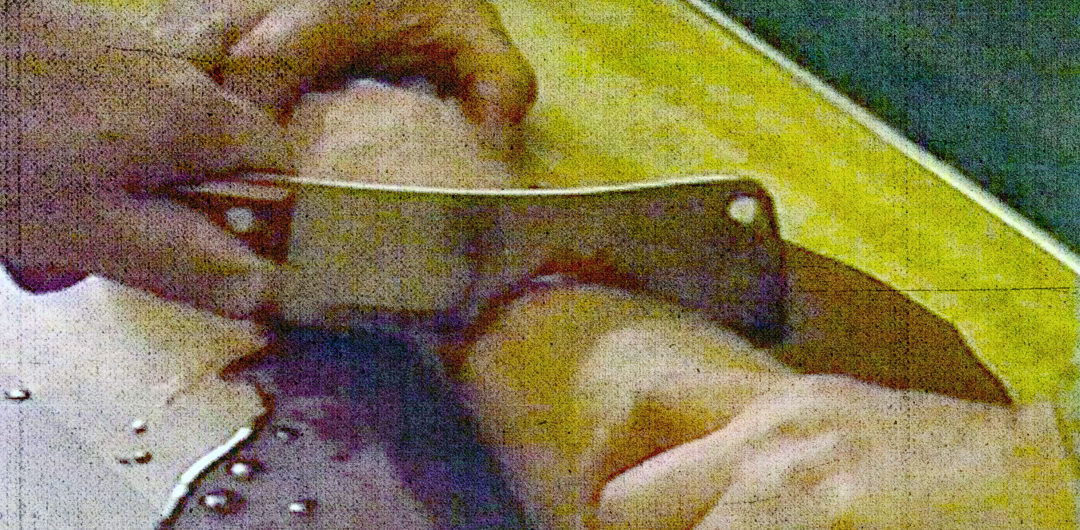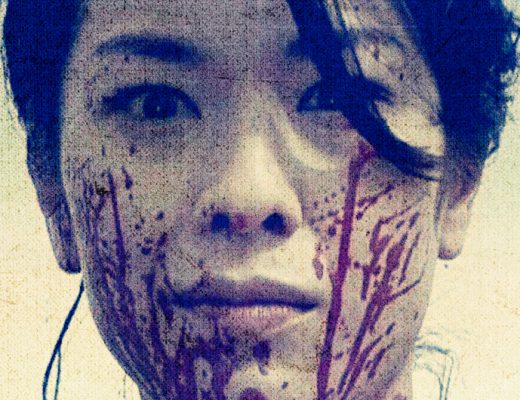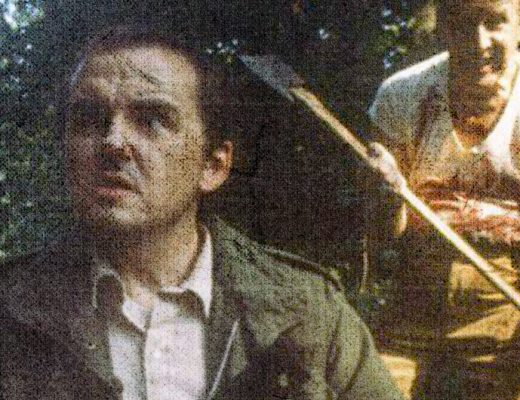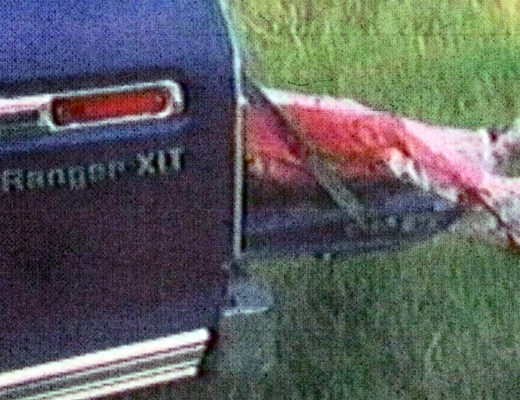It’s a brisk Friday night in June, 1987. You shuffle into Dave’s Video again, hoping for a sparkling new release to calm the stresses of the past work week. Walking over the dust-encrusted, poo-brown carpet, you pass by a big box for Blood Cult. Remember that one? You got all revved up for a night of solid horror chills, only to be stabbed in the back with a “movie” that looked like a visit to the set of Sanford & Son. Good thing you learned your lesson, huh? On the other hand, it’s been awhile since you rented a horror movie. And hey! That Video Violence cover art looks intriguing.
After United Entertainment hit paydirt with Blood Cult and The Ripper in 1985, shot-on-video (SOV) horror films staked their claim. In the world of exploitation film business, it made sense. Since rental audiences were unable to distinguish the filming methods of a movie based solely on box art, producers discovered a thrifty method of turning a profit. Not to mention getting their own vid-films on the shelves. Today, the films range from dated hilarity to unwatchable filth, but the proliferation of this bizarre mini-genre remains enchanting. From 1986-1988, dozens of mysterious regional titles spewed forth more gore, more plagiarizing, and even less coherence.
As new SOV titles began to hit the shelves, Bill Blair’s company felt the need to expand. Thanks to the success of United’s previous two SOV releases, Revenge: Blood Cult II (Christopher Lewis, 1986), a sequel to Blood Cult was shot on 16 mm film. It went on to become United’s biggest hit yet, even gaining notoriety in several major foreign markets. “I had viewed a few of the films that popped up in Blood Cult‘s wake,” notes Bill Blair, president of United and VCI Entertainment. “We needed to step things up…we went on to produce Terror At Tenkiller, Forever Evil, and The Last Slumber Party (the worst film ever made). Forever Evil was probably one of our most successful films, monetarily.” United moved on and up, leaving behind the realm of SOV. Here comes the flood.
In 1986, the rimshot of United’s hits began to have some resonance with video distributors. One-shot SS Video delivered Spine (John Howard/Justin Simmonds, 1986), a fetish tape masquerading as a slasher with Camaros. Synchron offered up their sole release Splatter: Architects In Fear (Peter Rowe, 1986), a fake documentary about a fictitious film (whoa!) that piles on the boobs and (making of) gore. Fly-by-nighters Mogul Video released Demon Queen (Donald Farmer, 1986), the first in a long series of camcorder gore-fests from director Farmer, who continues to produce no-budget junk to this day. Even established companies like Magnum Entertainment jumped into the SOV fire, releasing Jeff Hathcock’s follow up to Victims!, Night Ripper!, in 1986. Judging from their absolute obscurity in 2005, none of these releases seemed to make much of a ripple when compared to United’s titles. That is, until Gary P. Cohen came along.
1986. A video store in New Jersey. A woman, with her two kids in tow, grabs a copy of I Dismember Mama off the shelf. Approaching the counter, she asks store owner Gary Cohen, “Does this have any nudity?” Gary replies, “No, I don’t remember any, but that film has decapitations and all sorts of other gore.” The woman shoots back: “Oh. Ok, then the kids can watch it.” Video Violence was born.
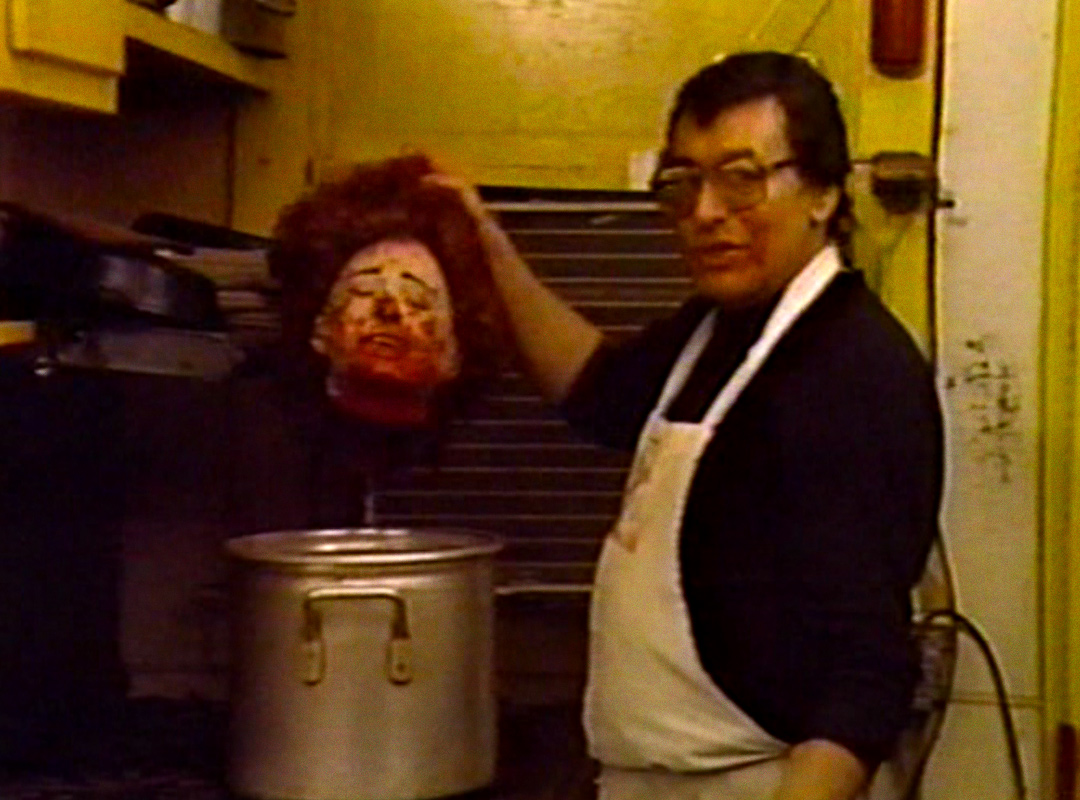
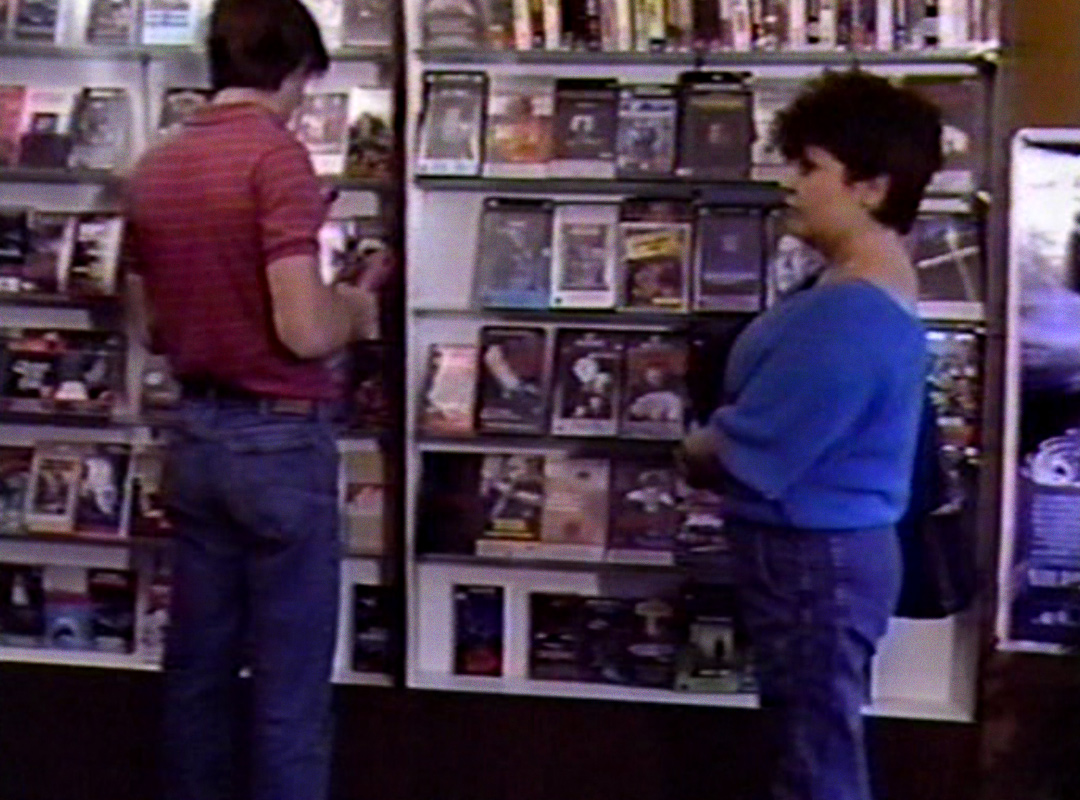
Released by Los Angeles-based Camp Video in 1987, Video Violence (Gary Cohen, 1987) survives today as the most widely distributed (and well known) SOV horror film next to Blood Cult. According to Cohen, “[Video Violence] was created for two purposes — to reflect the idea that violence is okay but sex isn’t — and for us to have a good time. I carried a few shot-on-videos in my video store, so we thought, once it was done, we’d see if any distributors were interested. Certainly our actors were as mediocre as the ones in the others films! If they could do it, damn, we could too!” With a few hundred dollars and some 3/4″ U-Matic video equipment, Cohen and company hit the streets of Frenchtown and Bound Brook, New Jersey to film their epic gore mess-terpiece. As the box says, “When renting is not enough!”
The plot is simple, albeit unique. A married couple (him; bald and mulleted, her; fresh in rayon) move to a New York suburb and open a video shoppe. The rude patrons of the store are only interested in two things: slashers and XXX hits. After discovering that a returned rental tape has been swapped out with a homemade snuff film, our Video Wizards desperately try to crack the mystery, without much help from an asinine police chief. The townspeople, including anti-heroes Howard and Eli, continue their maim ‘n’ tape snuff hobbies. Along for the ride is a surreal movie within a movie called The Vampire Takes A Bride and a baker’s dozen of hysterical acting experts. It’s dreary, mean-spirited, yet curiously mysterious; a slow blitzkrieg of all-time-cheapest gore, bare breasts, and swirling synth blips, as the cult of snuff film devotees unveil their plans to take over the town! Oh yeah, and somebody rents Blood Cult too, patterned after Cohen’s real life video store encounter with I Dismember Mama. Remember, in a town of 300 people, “They all have VCRs.”
After editing over two consecutive midnight sessions at a local cable station (three were booked, but the station’s owner found out what the film was about and called it off), Cohen began to shop around the finished product. Eventually, he settled on the now-legendary Camp Video for distribution. As Gary points out, “Camp offered the best deal…they were going to make posters and use big boxes. That alone clinched it!” Soon after its release, Video Violence started to show promise. The first big box edition completely sold through, leading to an entire second pressing with new cover art (unfortunately in a regular sized box). SOV horror had lived to see its second big hit. The director of Video Violence was just getting started.
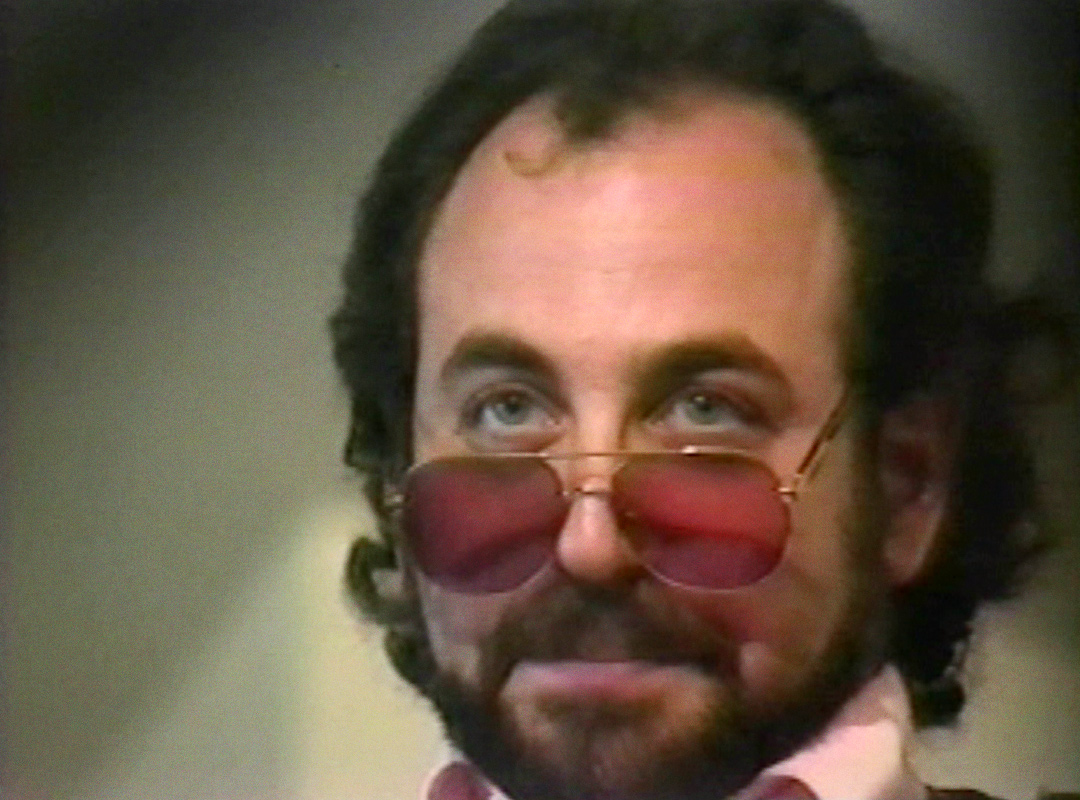
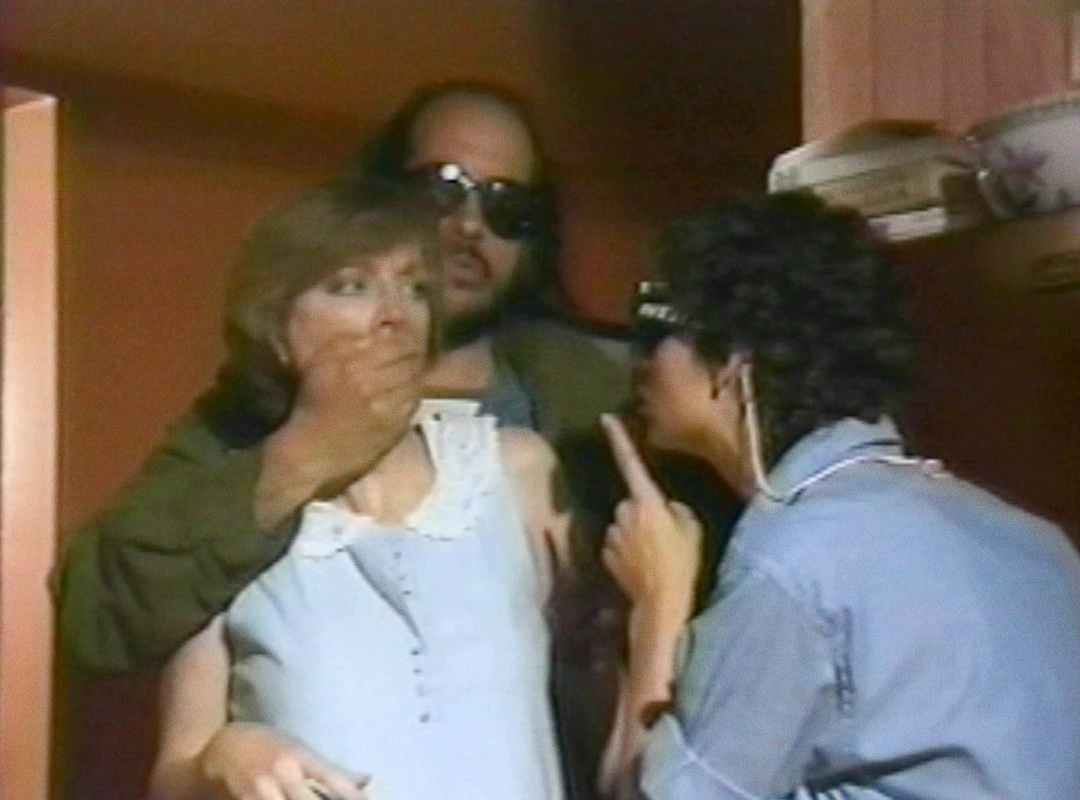
Hot on the trail of Gary’s first hit, production began on a second SOV feature, Captives (Gary Cohen, 1988). Although shot in 1987, the film wasn’t completed for release until 1988, when it was retitled Mama’s Home, edited, and released unceremoniously by Majestic Video. Possibly the most obscure feature to be covered here (Cohen holds the only true master copy and refuses to acknowledge the butchered Mama’s Home), Captives may also be the most accomplished, at least in “real” movie terms.
The setting: Suburbia, USA circa ’88; Max Headroom and Rainbow Brite posters, wood paneled home entertainment centers, and a soundtrack comprised of third rate Journey impressions. The story concerns a day in the life of a suburban New Jersey family. As the minutes unfold in near-real time, a woman and her family (baby, mother-in-law) find their home under attack from a trio of sibling weirdos (butchie chick, “crazy” guy, and a seemingly retarded fat guy). Of course, the house-jackers are out for revenge against the woman’s shady husband (played by Cohen himself), who indulges in a little lunch time nose candy with a hooker. Why the revenge? Turns out this Father Of The Year had a previous marriage and baby with the female member of our band of killers…and consequently set a house on fire, killing said kid. Evil momma, who was blamed for the crime, sez, “I’ve been waiting too friggin’ long to screw this up now!” Dead doggie, a knifed babysitter, and a nearly smothered baby; indeed!
Despite the obvious drawbacks (there’s nothing quite like watching everyday people mug their best “psycho” characters), Captives is well plotted and even a little unsettling in its gritty, real time presentation. You’ll recognize most of the cast from Video Violence and they do a decent job here. This was Cohen’s attempt at something more on the level, trading in gore and laughs for a serious tone. To a certain extent, he succeeds, which makes the film’s obscurity a bit of a shame. Captives remains the most accomplished SOV horror film from this era, so hopefully it’ll see a rediscovery at some point.
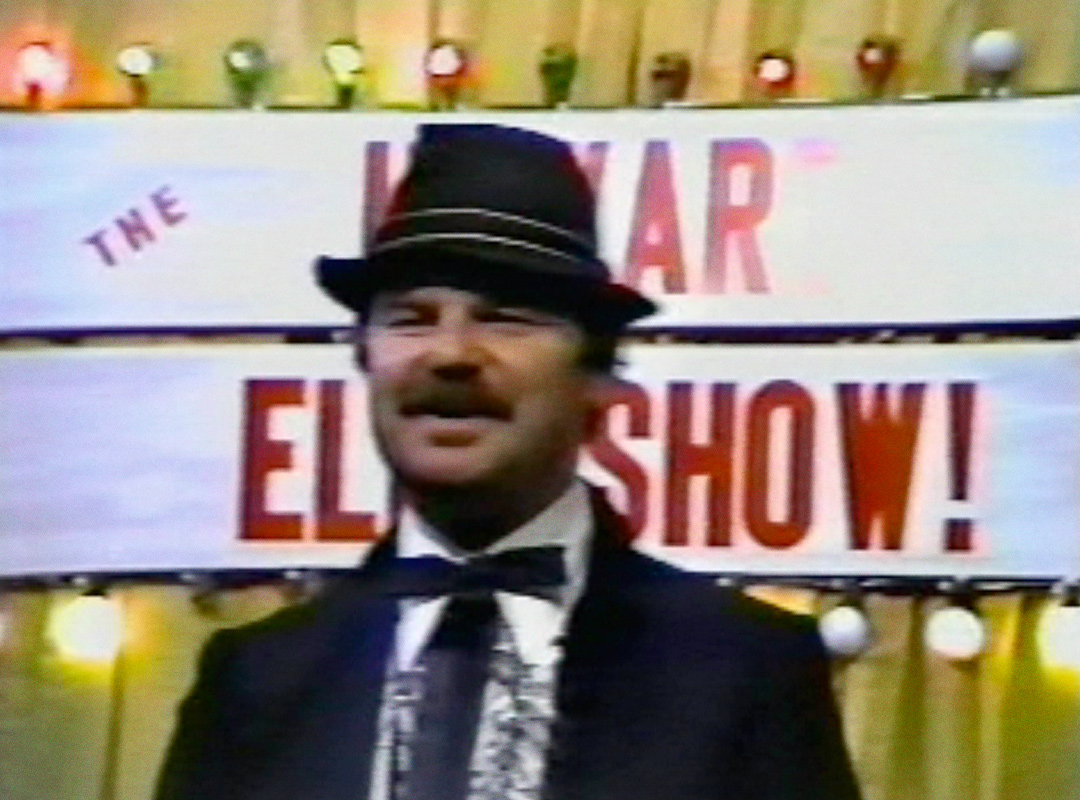
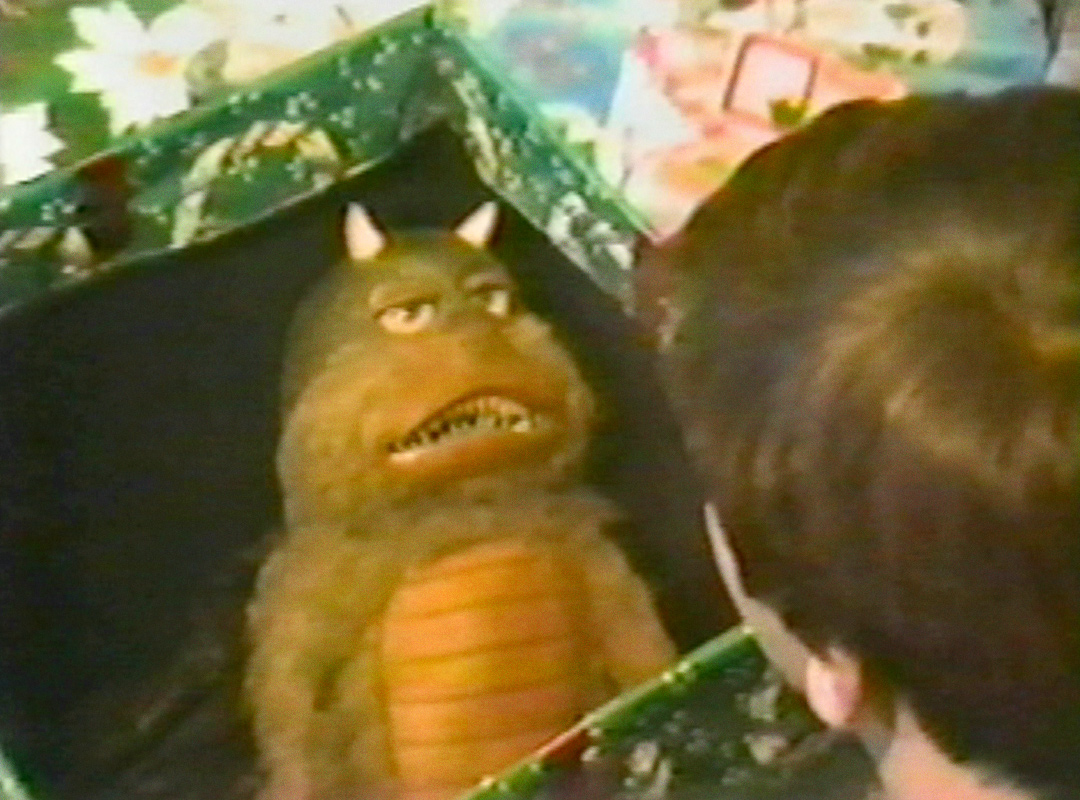
So Captives was a bit of a slump on the business end of things. Gary Cohen wasn’t through yet. Due to the success of Video Violence (it was even nominated for an American Film Institute Award as best independent film in 1986), Camp Video was interested in a sequel, with the promise of larger scale advertising and more big box production. After the absurdness of Video Violence and the serious tone of Captives, there was only one way to go with a sequel: Ketucky Fried Movie for the gore set. Sever a thumbs-up for Video Violence 2…The Exploitation! (Gary Cohen, 1987)
In awesome late 80s fashion, a pirate public access TV show is interrupting New Jersey’s cable box airwaves. It’s The Howard And Eli Show! Cue the crap-tastic video effects screens! For the next hour, we join our two maulin’ misfits from Video Violence as they host a snuff film variety spectacle, complete with commercials (you seriously won’t believe the “Wilbur” bit), priceless standup (“BWAUGH-HA-HA-HA!”), contributions from at-home viewers, and an electric piano-playing sidekick/nerd named Gordon. After the skits unfold — electric chair, extended topless girl torture, gratuitous, and I mean gratuitous, “college” girl dance party, a return to the Video Violence store — Howard and Eli wrap up the show. What could possibly enthrall you next? Try picking up right where the first film left off, complete with several surprise endings. Or maybe check out the infomercial for ordering VV2, complete with appearances from Freddy, Jason, and Michael Myers?
The concept of Video Violence 2 is obviously righteous. Luckily, the entire film follows suit. While it still retains a base level of mean-spiritedness, the humor works both intentionally and subversively, kind of like a Herschell Gordon Lewis production for the 80s. Gary Cohen adds, “We had an even better time with VV2 — which is, in my opinion, actually an intentionally funny movie.” Right-o, and therein lies the delight; you can laugh at the so-fake-they’re-genius gore effects, the perfect snapshot of 80s home video production, or the really dumb jokes. Better yet, slap your knee with all of it and admire the accomplishment and scope of the film, especially for a SOV horror production.
In the years following his SOV legacy, Gary Cohen founded a theater company (Celebration Playhouse), acted as an agent for the William Morris Agency, chalked up numerous stage credits, authored a book on community theater, and currently acts as Producing Director for Middlesex County, New Jersey’s “Plays In The Park” series. But he hasn’t left Howard and Eli in the dust. In 2006, eiCinema will be releasing an extras packed double feature DVD of Video Violence 1 & 2 with Cohen’s full participation.
The increased prominence of Cohen’s big boxes led to the emergence of even more SOV titles in 1987, much like the influence of Blood Cult’s success just two years earlier. The long-running Troma Studios released Redneck Zombies (Pericles Lewnes, 1987), a brainless zombie romp for extreme gore sickos. BC Video pressed up homemade copies of Tales From The Quadead Zone (Chester Turner, 1987), the ultimate SOV trash-horror film from the director of Black Devil Doll From Hell (1984). United dumped Blood Lake (Tim Boggs, 1987) onto the market, a slasher-lite featuring a cabin, a lake, and an excruciating game of quarters. Camp Video struck again with Cannibal Hookers (Donald Farmer, 1987), a title which needs no explanation. Late 80s SOV staples Donna Michelle Productions delivered Splatter Farm (John and Mark Polonia, 1987), a gross-out belch of bad taste that marked the first appearance of SOV lifers John and Mark Polonia. 1990 fast approaching, the glut of SOV product began to dissipate, at least for a few years. But it wasn’t over yet.
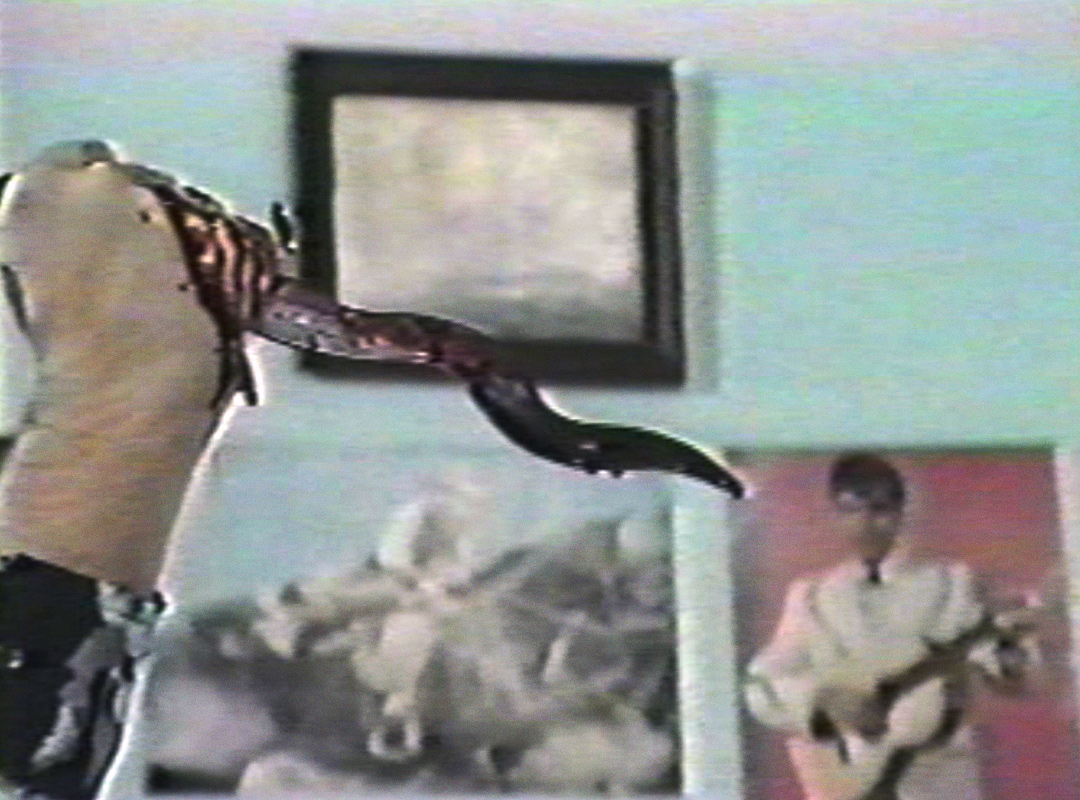
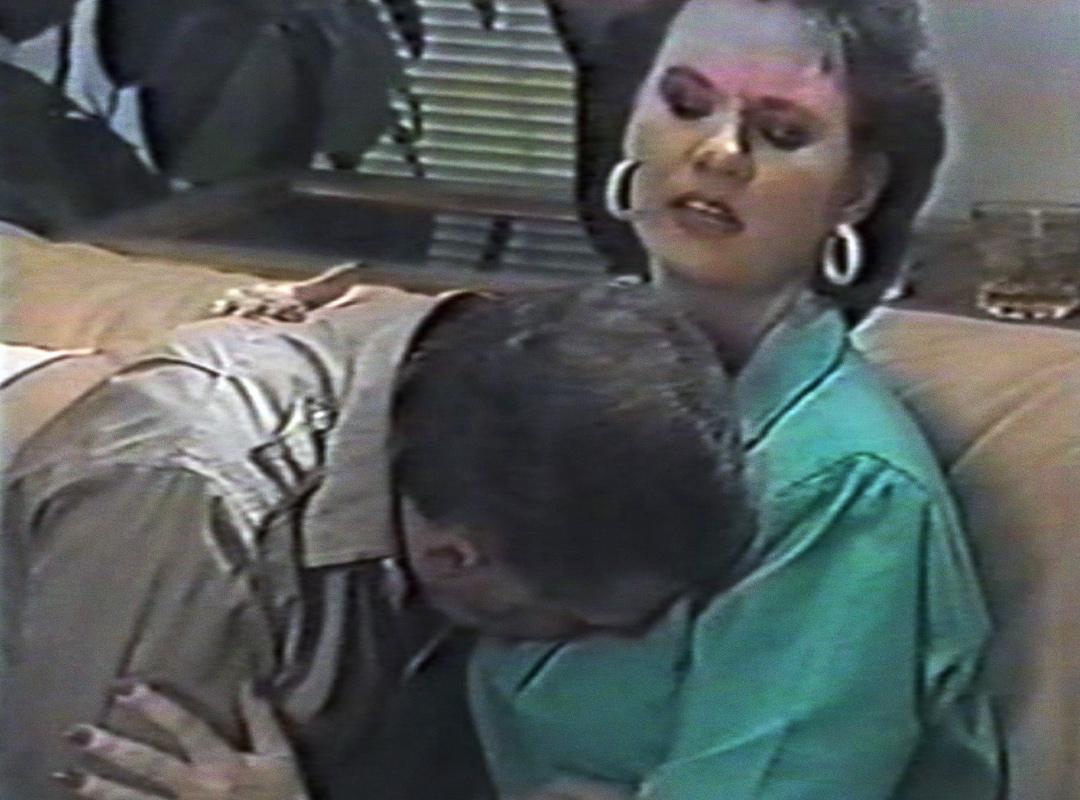
In the first part of this SOV odyssey, I mentioned something about films, filth, and ten garbage bags. Welcome to 555 (Wally Koz, 1988)! On the cruddy streets of Chi-town, Illi-noize, a “60s hippie” (fake beard, rayon hawaiian shirt) spends his evenings brutally murdering couples, then having sex with the deceased females. Five couples, five nights, every five years (555, get it?). In case you’re wondering, yes, we get to see the “after” act performed twice. Hot on the case are a couple of coppers, one of which needs to take a serious chill pill. In-between lunches at “Pepe’s Hot Dogs” (hot dogs, beef sandwiches, bratwurst), our severely vindictive officers argue with a female reporter and chase around their only suspect, a beady-eyed war vet in a safari shirt. The rest of the runtime involves false leads, lots of lengthy blood ‘n’ boobs gore, and a serious negative slant towards women; every female character is referred to as a sex object and/or hacked up while the camera lingers on bare, blood-caked breasts. They even use the “c” word.
Shot on 1” video tape entirely in Chicago’s Ukrainian Village, 555 hit the shelves courtesy Slaughterhouse Entertainment/King Video Distributors. King Video was director Wally Koz’s homegrown company, kick-started to distribute this film and future releases (there weren’t any). Koz’s project featured a large advertising push towards video stores, complete with full-sized posters and press quotes like, “Has a story line and a plot,” and “Blood, gore, sex, nudity, and other things we can’t mention.” In the scheme of SOV history, 555 remains notable today because it shows just how far these unchecked videos were willing to go. Juxtaposing the most hilarious fake sex scenes I’ve ever seen (“Ooh…aah…don’t stop now…do me…”) and equally ridiculous dialogue (“A real sicko, wanting to screw dead meat…different strokes for different folks!”) with disturbing gore, the film lands firmly in the dirt and never looks back. It’s a straight up sleazer; dreary, extremely cheap, and packed to the teeth with bad taste. Well, at least we’ve got the bedroom keyboard licks of Frankie “Hollywood” Rodriquez and a few sweet Chicago accents to keep us company.
The last two years of the decade produced a handful of new titles, all of which remain utterly rare. Donna Michelle Productions returned with Cannibal Campout (Jon McBride, 1988), the debut from still-active SOV director McBride, in which a trio of backwoods cannibals lays into the extreme gore via a group of college backpackers. Camp Video let out its last gasp by producing Death Row Diner (B. Dennis Wood, 1988), a truly bizarre horror-comedy concerning a reanimated death row inmate on the loose during a movie shoot. Modest distributor Southgate Video let loose with the horror-comedy Phantom Brother (WIlliam Szarka, 1988), in which a strange family of white trash ghosts butcher a few partying teens and a movie crew. Raedon Home Entertainment delivered the first of several SOV films, Fatal Images (Dennis Devine, 1989), a $10,000-budgeted satanic slasher that seems to have disappeared completely. Following up Cannibal Campout, Donna Michelle Productions released Woodchipper Massacre (Jon McBride, 1989), a tongue-in-cheek story of dysfunctional kiddies and their aunt’s adventures in a woodchipper. And with a poof of blood red kayro syrup, that was pretty much it.
As the 90s hit and technology expanded, the girth of SOV horror product multiplied tenfold. Lacking the dated, first-dib charms of the Rubik’s decade, the 90s proved that anyone with a camcorder and a rubber machete could hawk their basement abominations through fan conventions, mail order, and later, the Internet. As mom and pop video stores closed shop and DVD took over the world, big boxes became extinct; the mystery and novelty had evaporated. Admirable in their successes and strangely alluring with their dirt-cheap productions, people like Bill Blair and Gary Cohen helped to forge new ground in the development of home entertainment. For that reason, 80s SOV horror films will always be sought-after relics, reminiscent of a time when exploitation filmmaking was still a tangible, viable option. Even if the results were sometimes iffy.
As I place my tattered big box of Video Violence back on the shelf, I’m still not sure what to make of the film. I guess it doesn’t really matter. Every time my eyes cross that beaming yellow copy, I can’t help but smile. “Could this happen at YOUR video store?”
Be Kind And Rewind: BACK TO PART ONE
Special thanks to Fred Adelman of Critical Condition, Bill Blair of VCI Entertainment, and Gary Cohen for their help and participation.

